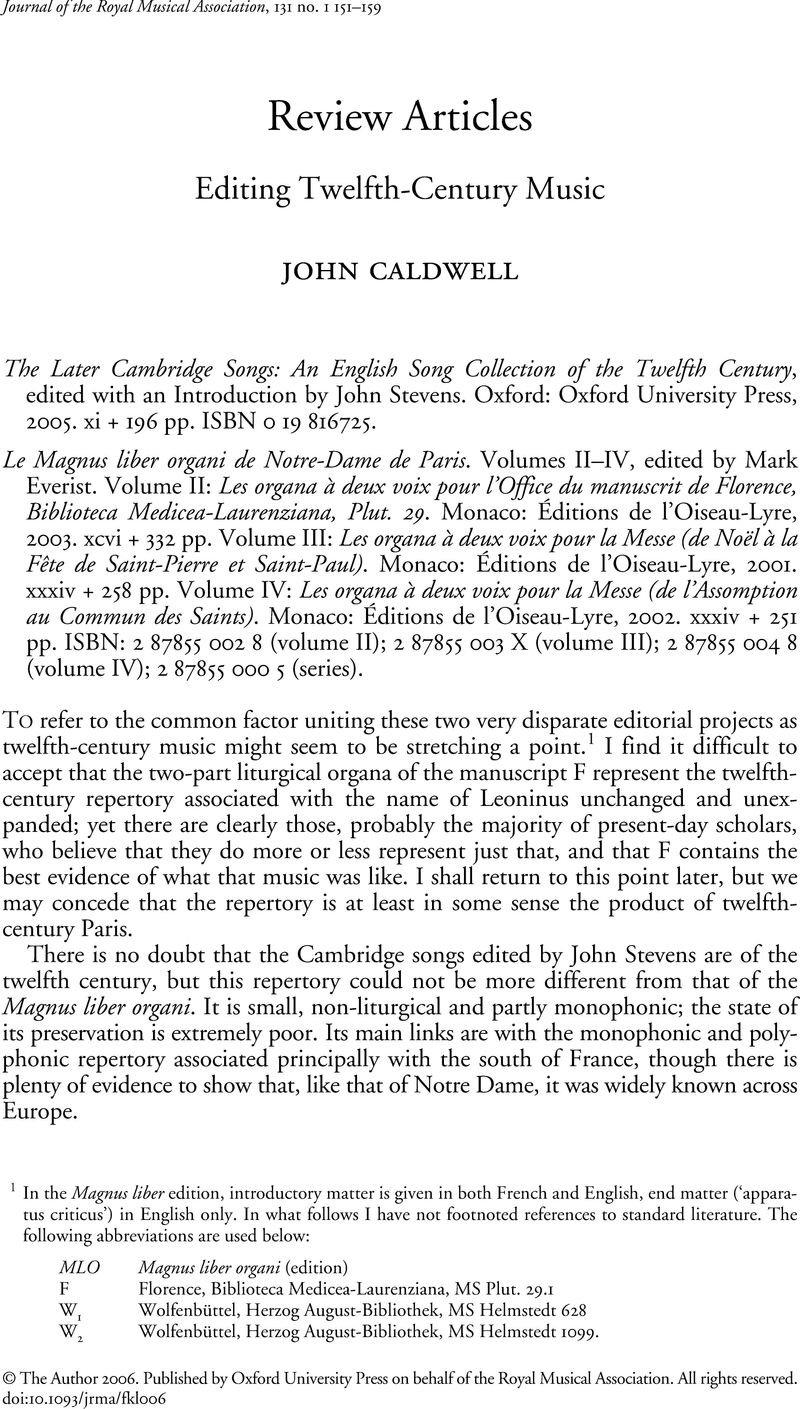No CrossRef data available.
Article contents
Editing Twelfth-Century Music
Published online by Cambridge University Press: 01 January 2020
Abstract

- Type
- Review Articles
- Information
- Copyright
- Copyright © 2006 Royal Musical Association
References
1 In the Magnus liber edition, introductory matter is given in both French and English, end matter ('apparatus criticus') in English only. In what follows I have not footnoted references to standard literature. The following abbreviations are used below:Google Scholar
MLO Magnus liber organi (edition)Google Scholar
F Florence, Biblioteca Medicea-Laurenziana, MS Plut. 29.1Google Scholar
W1 Wolfenbüttel, Herzog August-Bibliothek, MS Helmstedt 628Google Scholar
W2 Wolfenbüttel, Herzog August-Bibliothek, MS Helmstedt 1099.Google Scholar
2 Otto Schumann, ‘Die jüngere Cambridger Lieder-sammlung’, Studi medievali, new series, 16 (1943–50), 48–85.Google Scholar
3 Cambridge, University Library, MS Ff.1.17 (1).Google Scholar
4 A. Hamilton Thompson, The Abbey of St Mary of the Meadows Leicester (Leicester, 1949), 2.Google Scholar
5 See his Words and Music in the Middle Ages (Cambridge, 1986), esp. pp. 492–504, summarizing the argument of the book as a whole.Google Scholar
6 None has gone as far as Theodore Karp in The Polyphony of Saint Martial and Santiago de Compostela, 2 vols. (Oxford, 1992), whose hypothesis of total metricalization entails too many internal contradictions to be plausible.Google Scholar
7 Even to the extent of reproducing the meaningless repetitions of the interval D–A in the first system. What the scribe seems to have done was to repeat the first note (D) more or less at random across the stave; then, realizing that A should supervene about halfway along, he entered several notes at that pitch (beginning with a D–A ligature) without deleting the Ds that remain.Google Scholar
8 Tischler's transcription (The Earliest Motets, New Haven and London, 1982, i, 15), is in this respect preferable, but it does not restore the missing music of the upper voice.Google Scholar
9 Heinrich Husmann, ‘The Enlargement of the Magnus liber organi and the Paris Churches St Germain l'Auxerrois and Ste Geneviève-du-Mont’, Journal of the American Musicological Society, 16 (1963), 176–203; idem, ‘The Origin and Destination of the Magnus liber organi’, Musical Quarterly, 49 (1963), 311–30.Google Scholar




